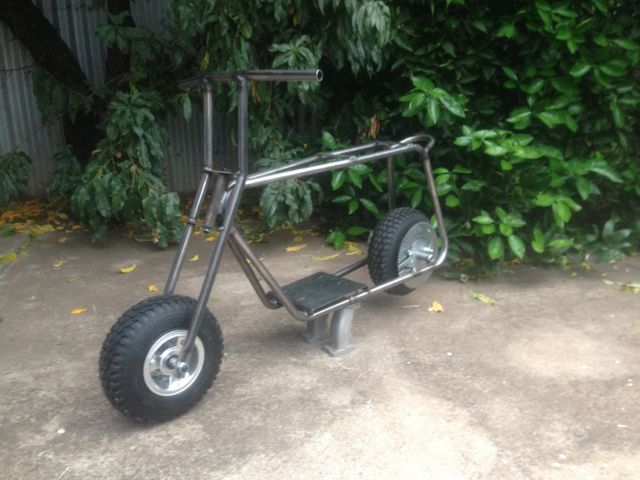
I calculated this using the wheel diameter (19"), the rear sprocket teeth (60), the front sprocket teeth (10) and the max RPM of the engine (3600) to give me 33MPH.

If you don't fancy a torque converter, a traditional centrifugal clutch like this one will work fine.īeware that you probably need a longer chain for this setup.Ī note on gearing: I set the bike up to top out at about 30MPH. If I find the time, I'll make a video comparing the two to help you choose. If the cons don't put you off go for it (remember to get the smallest drive sprocket you can and a pitch to suit your chain. The unit is also quite wide giving the bike a fatter, and slightly lopsided look. Some maintenance to consider as the belt is consumable all will need replacing after a period. Pros: Really get the most out of the engine. This setup means my minibike shoots off from a standing start like absolute stink and will pull power wheelies from a walking pace with a firm fistful of throttle. This way you have maximum torque throughout the speed range. With these, the engine reaches the optimum RPM range almost instantly and stays there until reving-out at the top end. It's basically an automatic transmission without discrete gear changes that uses a rubber drive belt (also known as a CVT for Constatnt Variable Transmission). These are the same transmission as you would get on a modern scooter like a Vespa GTS. 3/4" parallel shaft to match the engine). Transmission-wise, I had a Comet Tav2 torque converters kicking about: What's also nice about these is that they are mechanically very simple and self-contained i.e. The GX200 is meant to be roughly 6.5HP stock but you can squeeze twice that out of them with the normal tuning hacks (i.e a big valve cylinder hear, higher compression piston, billet conrod + flywheel, larger carburettor, ignition advance, big exhaust etc.). There is also a smaller sibling the GX160 which would be fine too.

Needless to say, there are loads of spares/mods out there and make them a common choice in kart and minibike builds. This is a very popular engine design used in everything from compressors, generators, log splitters, go karts and even wake-board cable winches. Loncin G200F-EP Engine with 3/4" Shaft - Replaces Honda GX200. The engine I had lying around from a previous build was a clone of a Honda GX200 like this one:
#MINI BIKE KIT TACO FULL#
1000x25mm 6mm full keyway axle like this one 25mm x 1020mm.18x9.50-8 knobby tyre on four stud rim.


4M of 1"diameter 16swg mild steel tubing (for the frame and the exhaust).I also reverse-engineered some rough plans and a CAD model of the frame which should help!įailing that please comment on the thread and I will be more than happy to answer questions for all of you.Īnyway, enough preamble, lets build a bike! That said I'll make every effort to include enough information in the text for you to be successful. WARNING: Since a lot of this was learning on the job, the photos/steps are not perfect. Anyway the bike turned out great and is an absolute hoot to ride so I thought I'd go ahead and do an Instructables.
#MINI BIKE KIT TACO HOW TO#
It was also the first time bending tubing (which is something I've been meaning to figure out how to do for a long time!). I was hesitating doing a write-up as I was sort-of learning/winging it as I went along since this my first build. In true OpenSource style, the design of my bike here is based on a bunch of ideas I've seen online remixed with my own twists which hopefully someone else can take and remix+share. For a while i was collecting ideas on my Pinterest board here: I've been looking to make a mini-bike for ages now and finally got round to it.


 0 kommentar(er)
0 kommentar(er)
